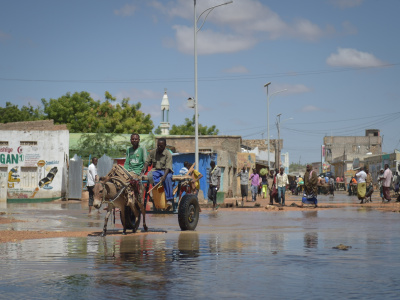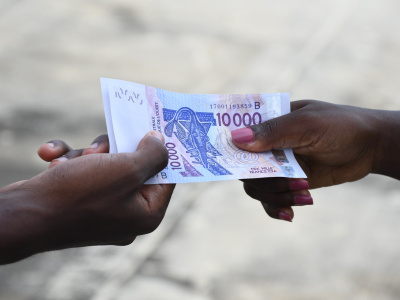
Three ways to scale up debt-for-climate swaps
While multilateral debt reform has been slow since the pandemic, debt-for-nature swaps are emerging more and more as a unique tool to address liquidity problems and foster investments in effective climate action. Karim Karaki, Alfonso Medinilla and San Bilal propose three ways to scale up debt-for-climate swaps in developing countries.
The IMF estimates that over a third of the world’s countries are in some form of debt distress, meaning that at some point these countries could default on their loans. This sovereign debt crisis has a detrimental effect on development. It also severely limits developing countries’ ability to invest in a more inclusive, climate-resilient and sustainable economy, in essence, forcing them to choose between servicing debt or investing in the future.
Debt-for-nature swaps have emerged as a unique tool to address liquidity problems and foster investments in effective climate action. Initially implemented in small island states only, in 2023 debt swaps potential market value reached over US$ 800 billion, and continues to grow.
While multilateral debt reform has been painfully slow since the pandemic, debt-for-nature swaps are picking up pace, and are pushing the boundaries in both size and methods.
But how can these swaps help ease the sovereign debt crisis and boost climate investments in the Global South? When are swaps the way to go? And how can creditors, borrowers and investors maximise the scale and impact of debt-for-climate swaps?
We propose three ways to scale up debt-for-climate swaps to foster climate finance in developing countries.
Map: ECDPM.
A new business case for debt-for-climate swaps
The basic concept of a debt-for-climate swap is to offer debt relief in exchange for new commitments to invest in green initiatives, often linked to conservation and climate action.
The reasoning behind this is that rising debt and debt servicing costs limit the fiscal space of governments to invest in a green and inclusive economic recovery, which can lead to further climate distress and damages down the line.
The African continent for example faces a particularly large climate finance gap of around US$200-400 billion per year between now and 2030. At the same time, African countries in 2023 paid no less than US$ 68,9 billion to service outstanding sovereign debt. By offering partial debt relief through swaps, some of these resources can be liberated to contribute to closing this gap.
In essence, there are two types of debt-for-climate swaps in use today: bilateral and commercial.
Graphic: ECDPM.
Three ways to scale up debt-for-climate swaps
Only a small portion of the potential market for debt-for-climate swaps is used today. Until recently debt swaps were considered pilot exercises. Today the approach is gaining ground and starting to mature. Yet in order to scale and maximise the usability of swaps, the process needs to become more efficient and costs need to be brought down. Streamlining can be done by developing a set of operational principles. These can then be applied in a wider set of jurisdictions, gradually moving further beyond SIDS and Latin American countries.
1. From bilateral to multilateral debt swaps
The first way to make debt swaps more efficient and widespread would be to move from individual, bilateral deals to a collective or even multilateral approach. This means pooling sovereign debt of multiple creditors to reach a greater scale and impact.
Graphic: ECDPM.
2. Guarantees as credit enhancement mechanisms
Scale can be achieved by using guarantees for credit enhancement. Guaranteeing interest payments, at least partially, reduces risk for potential investors, and allows governments to issue highly credit-rated, low-risk blue bonds. The 2023 Belize debt swapped bond for example has an Aa2 rating. This is essential for reaching a wider investor base, especially risk-averse institutional investors such as pension funds and insurance companies. Higher credit ratings also bring down interest rates, improving access to capital and lowering debt service costs in the long run.
Graphic: ECDPM.
3. Leveraging swaps for quality public and private investment
Finally, downstream implementation is key. Bilateral debt swaps often result in grant financing, which is hard to scale.
Switching and/or combining grants with financial instruments (loans, equity or guarantees) can generate returns that can be reinvested in additional development projects, whilst attracting additional public and private investments from the public and private sector - as in the case of blended finance, and fostering development impact.
The key to scaling is to move from a project-based approach towards a pipeline of initiatives that can lead to systemic change and impact. generate systemic transformative changes and impact.










